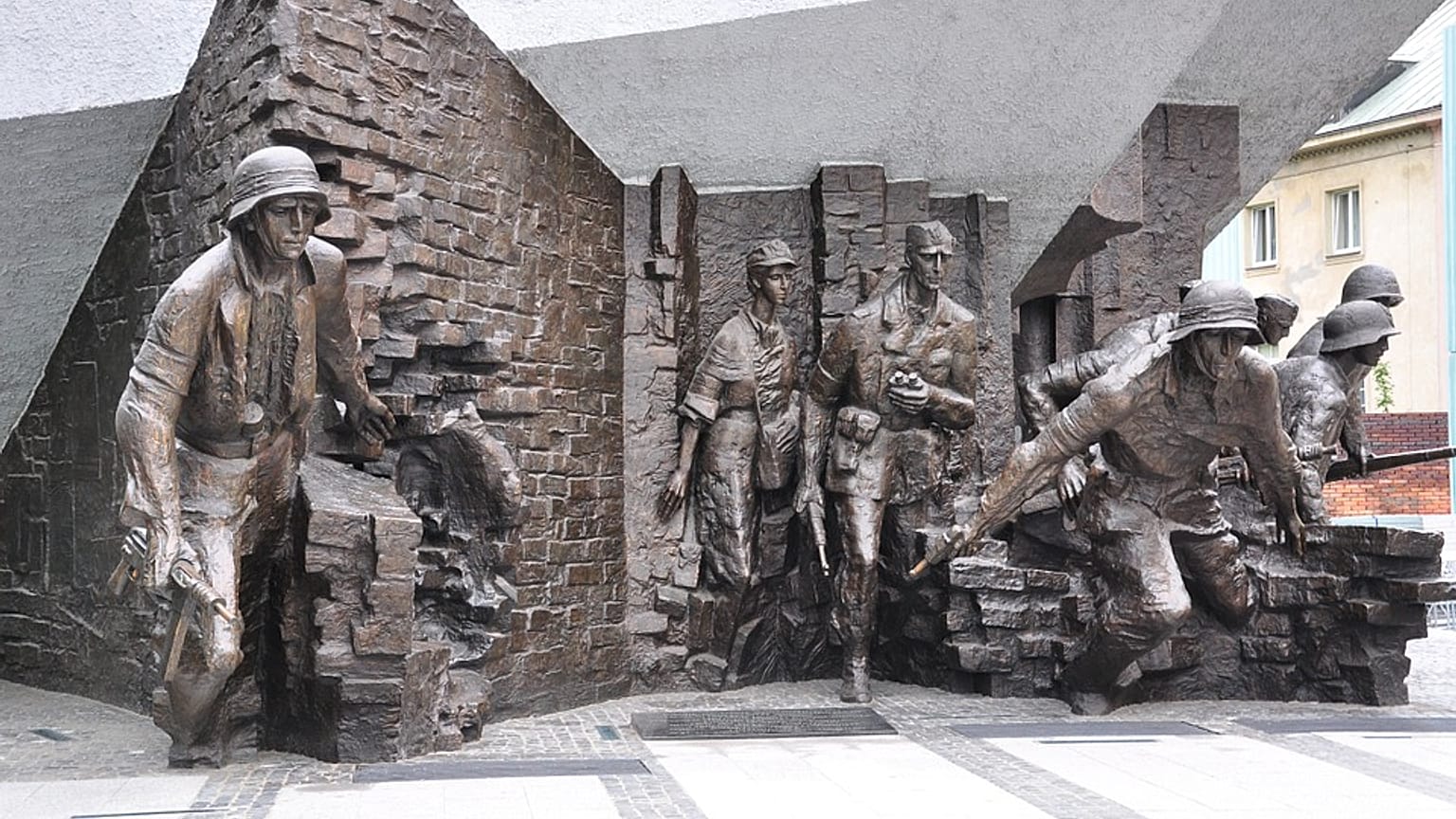Poland is marking the 75th anniversary of the Warsaw Uprising during World War II.
Poland is marking the 75th anniversary of the Warsaw Uprising during World War II.
The Polish capital will come to a standstill at 5 p.m. as sirens blare to commemorate the insurrection.
The impressive annual commemoration marks the Warsaw Uprising — an infamous 1944 resistance operation in Warsaw which had at least 150,000 victims.
How is the Warsaw Uprising viewed by Poles today?
The insurrection saw the Polish capital almost entirely and systematically destroyed during 63 days of fierce fighting against the Nazis.
Most Poles are familiar with the details of the uprising, and no-one in the country disputes the courage and sacrifice of the insurgents, who are celebrated each year.
But the event is also a divisive moment in history.
There are still heated debates in Poland between those who see the uprising as justified and those who find it unreasonable, stupid or even criminal.
The video below shows striking footage of the commemoration from two years ago:
What was the aim of the Warsaw Uprising?
In the summer of 1944, the underground Polish Home Army (Armia Krajowa) launched the operation.
Poland had suffered five years of a brutal German occupation but expected the Soviets to reach the Polish capital soon, as they approached from the East.
The main political objective of the Home Army was to liberate Warsaw and welcome the Red Army into a city already freed from the Nazis.
The underground resistance movement aimed to establish more equal relations with their powerful eastern neighbour. Despite poor relations between the Soviet Union and Poland, the Armia Krajowa commanders hoped that the Red Army would help them fight the Germans.
But the commanders also thought that after years of Nazi occupation, the inhabitants of Warsaw would spontaneously rebel against the German forces. It was thought that a military-organised insurrection would be better than an uncontrolled and badly-prepared citizen resistance.
How did the uprising unfold?
The Warsaw insurrection started on August 1, 1944, at 5 p.m. That moment is now named in the Polish history as "Godzina W" (the W hour) with W standing for Warsaw.
On the Polish side, there were as many as 25,000 to 35,000 fighters. But, historians say that only one out of 25 fighters was armed. The Germans, meanwhile, had a comparable number of soldiers but were significantly better equipped.
The plan of the Armia Krajowa commanders was to hold the city for 14 days, but the insurrection endured for 63 days.
During the first four days, the Germans’ resistance was not very strong and the insurgents were able to capture, with the help of the inhabitants, a significant portion of the city. By August 5, the Germans began intensifying their efforts — fighting not only the insurgents but also killing civilians.
Armia Krajowa progressively lost all seized parts of the city and surrendered on October 3. The Red Army did not arrive to help the insurgents. Though in the West it is widely seen as Stalin's order, the USSR insist they had made plans to help but the German forces made it impossible to do so.
The Soviet Army thus remained on the right bank of the Vistula river until January 1945.
On the other side of the river, the Germans had plenty of time to crush the uprising, killing an estimated 150,000 and 200,000 civilians and burning down most of the city.
How divisive is the Warsaw Uprising?
The official commemorations of the uprising will focus on the heroism of the fighters and the sacrifice of so many civilians. The common consensus of those in Poland is that the day of August 1st belongs to the fighters and victims.
But the rest of the year, many will continue to disagree on the decision to organise an uprising, given its tragic consequences.
Those who criticise the decision say the insurgents were unprepared and poorly armed. They also say the army commanders were naive to trust Stalin who had his own agenda and was not friendly to Poland.
They also add that Poland, after losing its capital and thousands of its inhabitants, was an easier prey for Stalin to transform it into a satellite country of the USSR after the war.
Obviously Stalin wanted to set up a pro-Soviet government in Warsaw, but relations were so poor that the two countries suspended diplomatic ties in 1943 so the idea of mutual trust is questionable at best.
Radosław Sikorski, the former Polish Foreign minister tweeted two years ago about the Commander of the Armia Krajowa and his order to start the Warsaw uprising.
"With bad intelligence and only 1700 weapons, he threw our youth against the Wehrmacht. He incurred one of our worst defeats in history," Sikorski tweeted.
Others say the decision was justified and that the city’s population would have spontaneously rebelled against the Germans after five years of a brutal occupation.
They also say that the uprising indirectly influenced the balance of power in post-war Europe, as the Soviets were unable to occupy a larger part of Germany because they waited four months on the right bank of Vistula.
During that time the Western Allies progressed and occupied a bigger part of Germany.















